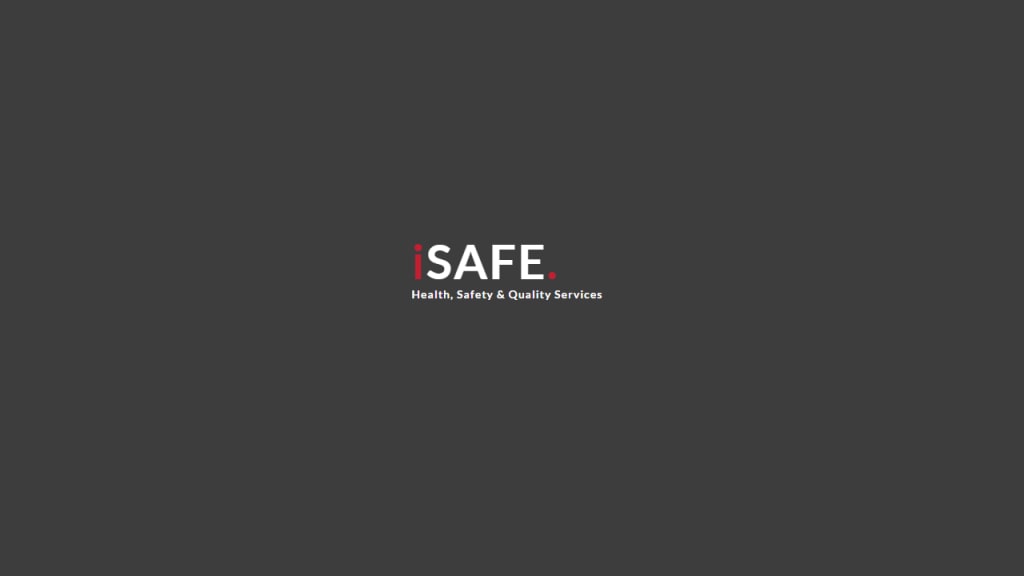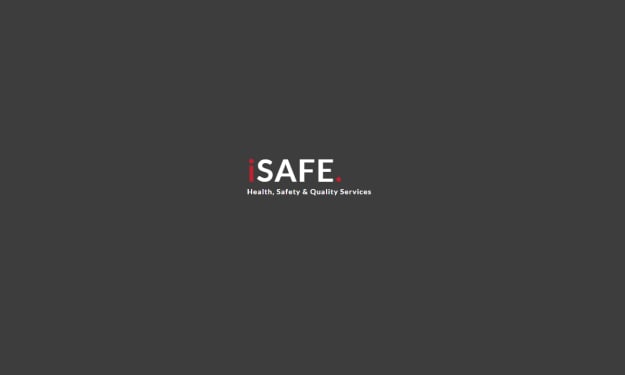Why are employee safety responsibilities essential for a secure workplace?
Employee safety

Are you aware of the critical role employee safety responsibilities play in ensuring workplace security? Every individual within an organisation holds a vital position in maintaining a safe environment. By adhering to safety protocols, reporting hazards promptly, and actively participating in training, employees contribute significantly to creating a secure workplace for themselves and their colleagues. [Read more] [https://isafe-safety.co.uk/blog/employee-safety-responsibilities-to-a-safer-workplace/]
Considering the paramount importance of employee safety responsibilities, it's vital to have the right support and resources in place. That's where iSAFE Safety comes in. With our expertise, resources, and tailored training programmes, we empower both employers and employees to fulfil their safety obligations effectively. Together, let's build a culture of safety and well-being in your workplace.
How Employee Safety Obligations Foster Workplace Safety.
In ensuring workplace safety, the obligations of employees hold paramount importance. Each member of an organization plays a crucial role in fostering a secure environment. By comprehending, prioritizing, and fulfilling their safety duties, employees significantly bolster the creation of a safer workplace for themselves and their peers.
Employee Safety Responsibilities:
Adherence to Safety Protocols: Compliance with safety regulations, including the use of Personal Protective Equipment (PPE), proper equipment utilization, and adherence to procedures, serves to minimize risks and avert accidents.
Reporting Hazards: Timely reporting of defective equipment, unsafe conditions, or potential hazards is essential to accident prevention and allows for effective risk mitigation.
Participation in Training: Active involvement in safety training initiatives enables employees to acquire the necessary knowledge and skills to adeptly respond to hazardous situations.
Benefits:
Cultivates a Safety-Conscious Culture within the organization.
Augments both individual and collective safety measures.
Mitigates accidents and injuries.
Encourages a mindset geared toward safety.
The significance of employee safety responsibilities cannot be overstated. Neglecting these duties can result in severe consequences, spanning from accidents and injuries to diminished productivity and potential legal repercussions. Upholding these responsibilities not only safeguards individual well-being but also fosters a positive work environment characterized by a sense of security and mutual appreciation.
Both employers and employees must acknowledge the importance of these safety obligations. Employers bear the responsibility of furnishing a safe workplace, inclusive of requisite resources, training, and support to meet safety standards. Conversely, employees are tasked with actively engaging in safety practices, identifying hazards, and promptly reporting potential risks. Through collaborative endeavors, a safer workplace can be realized, underpinned by a collective dedication to upholding safety obligations.
Employee safety responsibilities stand as pivotal pillars for ensuring workplace safety. By adhering to protocols, reporting hazards, and participating in training initiatives, employees actively contribute to the establishment of a secure environment. Companies like iSafe bolster these endeavors by offering expertise, resources, and training programs. Through concerted efforts among employers, employees, and supportive entities like iSafe, a culture of safety and well-being is nurtured and sustained.
"Empowering Employee Safety: Building a Foundation for a Secure Workplace"
In today's fast-paced work environments, ensuring the safety and well-being of employees is a top priority for organizations across industries. From manufacturing plants to corporate offices, every workplace presents its unique set of hazards and risks. However, one common thread binds them all: the crucial role of employee safety responsibilities in fostering a secure environment.
Understanding Employee Safety Responsibilities
At the heart of workplace safety lies the concept of employee safety responsibilities. These responsibilities encompass a range of actions and behaviors aimed at minimizing risks and preventing accidents. From adhering to safety protocols to reporting hazards and participating in training programs, employees play a vital role in creating a culture of safety within their organizations.
Adherence to Safety Protocols: Following safety rules and guidelines is the foundation of employee safety responsibilities. This includes wearing Personal Protective Equipment (PPE), using equipment correctly, and following established procedures to minimize risks.
Reporting Hazards: Timely reporting of faulty equipment, unsafe conditions, or potential risks is essential for preventing accidents and allowing for effective risk mitigation. Employees serve as the eyes and ears of the organization, helping to identify and address safety concerns before they escalate.
Participation in Training: Active engagement in safety training programs equips employees with the knowledge and skills necessary to respond effectively in hazardous situations. From emergency response protocols to proper handling of equipment, ongoing training ensures that employees are prepared to navigate potential risks.
The Benefits of Employee Safety Responsibilities
Embracing employee safety responsibilities yields numerous benefits for both individuals and organizations:
Establishes a Culture of Safety: When employees prioritize safety in their daily activities, it sets the tone for a workplace culture that values and promotes safety above all else.
Enhances Individual and Collective Safety: By fulfilling their safety responsibilities, employees not only protect themselves but also contribute to the overall safety of their colleagues and the workplace environment.
Prevents Accidents and Injuries: Proactive identification and mitigation of hazards help to reduce the likelihood of accidents and injuries, safeguarding the well-being of everyone in the organization.
Promotes a Safety-Conscious Mindset: Through continuous training and reinforcement, employees develop a heightened awareness of potential risks and adopt behaviors that prioritize safety in all aspects of their work.
The Importance of Upholding Employee Safety Responsibilities
Neglecting employee safety responsibilities can have serious consequences, ranging from accidents and injuries to loss of productivity and legal ramifications. Organizations must recognize the significance of these responsibilities and provide the necessary support and resources to ensure that employees can fulfill them effectively.
Employers play a crucial role in fostering a safe workplace by providing adequate training, resources, and support to meet safety standards. However, the responsibility for maintaining safety ultimately rests with each individual employee. By actively engaging in safety practices, identifying hazards, and reporting risks, employees contribute to the collective effort of creating a secure work environment.
Conclusion
In conclusion, employee safety responsibilities are fundamental to building a foundation for a secure workplace. By adhering to safety protocols, reporting hazards, and participating in training programs, employees play a central role in promoting a culture of safety within their organizations. Through collective effort and commitment, organizations can create environments where employees feel protected, valued, and empowered to prioritize safety in all aspects of their work.
About the Creator
Enjoyed the story? Support the Creator.
Subscribe for free to receive all their stories in your feed. You could also pledge your support or give them a one-off tip, letting them know you appreciate their work.





Comments
There are no comments for this story
Be the first to respond and start the conversation.